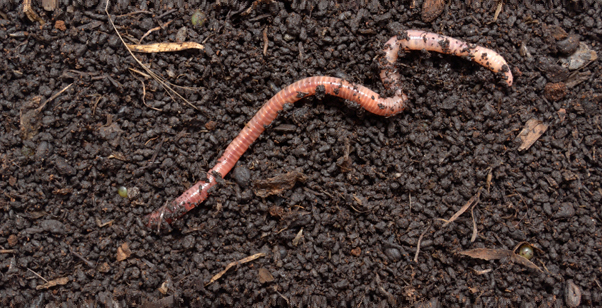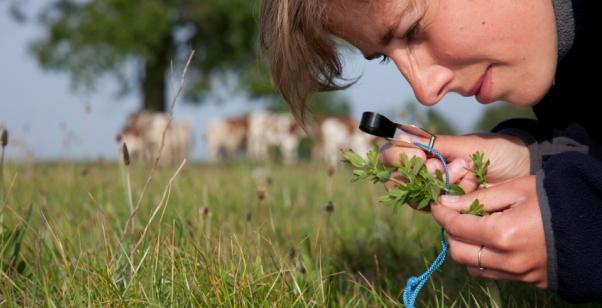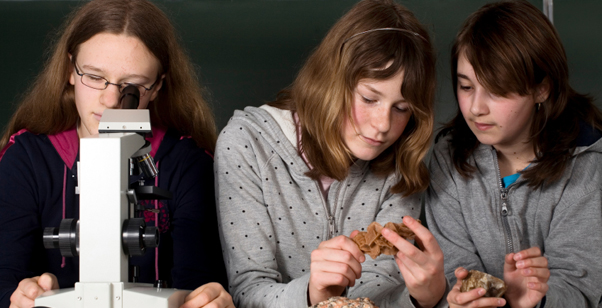Enzyme-catalysed synthesis
Class practical
In early studies of biology, we often focus on digestive enzymes. This can lead students to think that enzymes work only to break chemicals apart. This enzyme-catalysed synthesis offers an alternative enzyme reaction resulting in building up a new molecule.
The aim of the investigation is to prepare an extract of potato tuber, remove starch from it, and then check for its ability to catalyse the synthesis of starch from different substrates.
Lesson organisation
The enzyme extraction takes about half an hour. The extract can be stored overnight at 4 °C, but it will turn brown. To complete the investigation in one session, prepare the substrate solutions and set up the colorimeter while making the enzyme extract. Different groups could be responsible for different parts of the experiment.
Apparatus and Chemicals
For each group of students:
Access to a water bath at 25 °C
Centrifuge, 3000 rpm/ RCF 1000 g (Note 3)
2 medium-sized potatoes (Note 4)
Mortar and pestle
Test tubes, 8
Syringe, 5 cm3, 5
Spotting tile, 1
For the class – set up by technician/ teacher:
50 cm3 of 1% glucose-1-phosphate, for up to 8 groups (Note 1)
50 cm3 of 1% glucose, for up to 8 groups
50 cm3 of 1% maltose, for up to 8 groups
50 cm3 of 1% sucrose, for up to 8 groups
Iodine solution (Note 2)
Health & Safety and Technical notes
1 Glucose-1-phosphate: Make up the solution by dissolving 0.5 g of glucose-1-phosphate in 50 cm3 of distilled water (a 1% solution). The compound is unstable in solution, hydrolysing quite rapidly to glucose and phosphoric acid at room temperature. Prepare just before use, or store in a refrigerator (at 4 °C) for up to 24 hours. This, and the other sugar solutions, are described on the CLEAPSS Hazcard as LOW HAZARD.
2 Iodine solution: Iodine is only sparingly soluble in water (0.3 g per litre). It is usual to dissolve iodine in potassium iodide solution (KI) to make a 0.01 M solution (by tenfold dilution of a 0.1 M solution) to use as a starch test reagent. Refer to CLEAPSS Recipe card 33. For 100 cm3 of 0.1 M solution, measure 3.0 g of potassium iodide (KI) into an appropriate beaker. Moisten the potassium iodide with a few drops of water. Measure out 2.54 g of iodine (see Hazcard 54: iodine is harmful) and add to the moistened potassium iodide. Add a small volume of water and stir. When no more iodine appears to dissolve, add some more water and stir. Repeat until all the iodine has dissolved. Pour the solution into a measuring cylinder and dilute to the final volume. If there are any bits of iodine remaining, return the solution to the beaker and leave it on a magnetic stirrer for several minutes. Add the solution to a labelled bottle and mix well.
3 Centrifuge: You need enough ‘centrifuge space’ to produce around 25 cm3 of potato extract for each working group. A speed of just under 3000 revolutions per minute, corresponding to a relative centrifugal force (RCF, ‘g-force’) of just under 1000 g is enough to spin down starch grains.
SAFETY: The CLEAPSS Laboratory Handbook gives detailed information about the requirements of the British and International Standard (BS EN 61010-2-020) for centrifuges. Use this information to assess your school’s centrifuges if your documentation does not clearly state that they conform to this standard. The DfEE has stated that: ”Existing centrifuges not conforming to the safety requirements of this standard should not be used after 1 January 1997.” (From Safety in Science Education, HMSO, 1996, ISBN 011270915X). CLEAPSS advise that centrifuges which do not cut off the power to the rotor when the lid is raised, or have an exposed rotor, should be taken out of service. If using any centrifuge without a lock, users should not raise the lid until they can hear that the rotor has stopped.
4 Potatoes: Medium-sized potatoes are best. Large potatoes often have a poor yield of phosphorylase enzyme. Small new potatoes have such small grains of starch that they are difficult (or impossible) to spin down.
Procedure
SAFETY: Ensure your centrifuge is safe to use and that students are briefed to use it correctly. Make eye protection available when iodine solution is dispensed.
Preparation
a Make up a 1% solution of glucose-1-phosphate in distilled water (Note 1).
b Make up iodine solution (Note 2).
c Prepare the colorimeter by putting a known volume of water (say 3 cm3) into your colorimeter cuvettes or bottle. Add 0.5 cm3 or 1 cm3 of iodine solution (Note 2) and swirl to mix well. Make sure this liquid is deep enough in the vessel to provide an accurate reading in your colorimeter (by comparing with a full colorimeter vessel of the same solution). Use a yellow filter, as we will be following the formation of a blue starch-iodide complex (peak of absorption 580-600 nm). Record the reading from the iodine solution as the ‘zero’ reading for this procedure. Set up ‘clean’ cuvettes to follow the reaction with 2 cm3 of water and 0.5 or 1.0 cm3 of iodine solution. You will add 1.0 cm3 of starchy solution to each of these.
Investigation
d Take two medium-sized potatoes, peel and cut into small pieces (Note 4). Crush with a pestle and mortar or use a blender. Add water sparingly so that the resulting mash is just liquid enough to be poured from the container.
e Pour the crushed potato quickly through a single layer of muslin or nylon stocking.
f Transfer the extract to centrifuge tubes. Spin in a bench centrifuge for 5 minutes at the highest speed to separate the starch granules (Note 3).
g After spinning, take one drop of clear liquid from the top of each tube. Test each drop on a white tile with iodine solution. If the blue colour characteristic of starch appears, centrifuge for a further 5 minutes.
h Repeat the iodine test and, if necessary, continue to centrifuge until no starch is detectable in the samples of clear liquid. Once the liquid is free of starch, carefully pour the clear liquid from each centrifuge tube into a single container. If this is to be kept overnight, stopper and refrigerate the container.
i Label 4 test tubes. Use a syringe to put 5 cm3 of glucose-1-phosphate into a test tube. Place it in a water-bath at 25 °C. Use fresh syringes to measure 5 cm3 of the other substrates into the other test tubes in the same water-bath. Record which substrate is in which tube.
j Use a syringe to measure four 5 cm3 samples of the clear potato extract into each of four more test tubes, and place in the water bath at 25 °C.
k Add 5 cm3 of potato extract from a tube in the water bath to each tube of substrate solution. Start the stopclock.
l After two minutes, take a single drop of the potato extract/ glucose-1-phosphate mixture. Mix it with a drop of iodine in one of the wells of a spotting tile. Look for a very slight colour change. If there is none, repeat at 2-minute intervals as recorded by the stopclock.
m As soon as the slightest trace of blue or grey colour appears on the tile, remove 1.0 cm3 from the mixture into your colorimeter vessel containing 2 cm3 of water and 0.5 cm3 or 1.0 cm3 of iodine solution. Mix well. Record the colorimeter reading and the time.
n Using fresh iodine solution, carry out similar measurements with the other three extract/ substrate mixtures.
o Check the amount of enzyme extract/ substrate mixture left. Arrange to take more samples at regular intervals. Try to take at least 8 readings for each extract/ substrate mix. If colorimeter readings are changing rapidly from one sample to the next with a particular substrate, concentrate on that mixture and take samples as often as possible. Then return to the other extract/ substrate mixtures.
p For each measurement, record the substrate, time, apparent colour (to your eye) and colorimeter reading.
q Convert the meter readings into starch concentrations using a calibration curve. (See associated practical on this site.)
Teaching notes
After dealing with the digestion of starch, it is appropriate to ask how starch is formed in the first place. The tissue of potato tubes is a good source of the enzyme(s) responsible for the synthesis of starch.
Digestion of starch yields first maltose and then glucose, so synthesis could be a simple reversal of this process. Alternatively, the best substrate could be one of the compounds inside cells which is closely related to simple sugars; an example is glucose-1-phosphate. This demonstration shows that an anabolic pathway need not be the simple reversal of the catabolic pathway. The hydrolysis of the glucose-1-phosphate provides the energy necessary to synthesise the starch.
The starch in potato tubers is stored inside cells in large granules which sediment on centrifugation. If you examine a drop of the glucose-1-phosphate/ enzyme mixture under a microscope at the end of the investigation, you may see starch granules 4 to 10 ?m in diameter.
The ‘lag phase’ at the beginning of the process suggests that the reaction is autocatalytic. CS Hanes (1940) demonstrated this by including small amounts of soluble starch to the reaction mixture; this reduced the length of the lag phase. Your students are unlikely to come up with the idea of autocatalysis on their own; however it is worth discussing as an example of the way in which graphs can be used to suggest and develop hypotheses.
Health & Safety checked, May 2009
Downloads
Download the student sheet ![]() Enzyme-catalysed synthesis (73 KB) with questions and answers.
Enzyme-catalysed synthesis (73 KB) with questions and answers.


